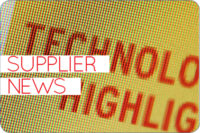Superior Farms secures USDA approval for industry’s first camera grading technology
Superior Farms, North America’s largest lamb processor, announced that it has received approval from the USDA to begin grading carcasses with the VSS2000 System camera (Electronic Grading), the first digital camera to be approved for use in the US lamb industry. The new digital camera was installed in October 2015, and Superior Farms has worked hand-in-hand with the USDA to secure approval since then.
Rick Stott, President and CEO of Superior Farms said of the launch; “Our team worked closely with the USDA for two years validating the camera’s algorithms to assure accurate full carcass measurements of both yield and quality grades. Combining Electronic Grading with our Producer Portal will allow unprecedented access to carcass information by our producer partners that will allow every segment of our industry to continue to produce a better product.”
This Electronic Grading system will provide Superior Farms producers detailed meat information about their lambs. “We will now be able to share this detailed information with producers through our Producer Portal. This information includes the USDA Yield Grade and Quality Grade, as well as the Ovine Cutability Calculation (OCC), the primal weights (leg, loin, shoulder, rack, breast, trotters, and neck) and two digital images of each lamb carcass processed,” said Lesa Eidman, Director of Producer Resources and Sustainability for Superior Farms.
“This technology will provide our producers with an unprecedented amount of information about the meat and carcass characteristics of their lambs. Ultimately, producers will be able to make genetic and production changes to provide US lamb customers with the highest quality, most consistent product we can deliver,” added Eidman.
The next steps are to, first, pair this information with the Electronic Identification (EID) tags so that producers can see the data on an individual lamb basis. Second, to implement the technology in Superior Farms’ Denver facility.
“Now that we have received approval from the USDA for the camera grading, we can begin implementing the technology in our Denver facility,” Stott noted. “We look forward to working with the USDA to expedite the approval process so that both of our facilities have this state of the art technology.” The USDA grader will remain onsite to verify that the technology remains accurate and in-line with the USDA grading standards.
The American Lamb Board has been a vital participant in bringing this development to fruition. Most importantly, the board funded electronic grading research conducted by The Center for Meat Safety and Quality, Department of Animal Sciences, Colorado State University. In their study titled “Industry Implications and Economics of Implementation of Lamb Instrument Grading,” The CSU found overwhelming evidence of the value of the camera technology and concluded: “… unprecedented information about lamb carcass composition and value will be collected and available. True production management decisions can be made by U.S. sheep producers with conveyance of product attributes of harvested lambs.”
Source: Superior Farms
Looking for a reprint of this article?
From high-res PDFs to custom plaques, order your copy today!



